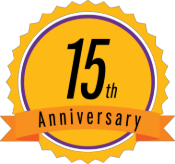Available now at Amazon
When did you first encounter poetry? How did you discover that you wanted to write poems?
I fell in love with poetry as a high school senior in Ms. Benz’s English class. It was an immediate and sudden revelation. We were each assigned a poet to study—Edna St. Vincent Millay was “my” poet and many of her lines are still engrained in my mind … Euclid alone has looked on Beauty bare / Let all who prate of beauty hold their peace / And lay them prone upon the earth …
Do you have a writing routine? A favorite time or place to write?
Most definitely. As long as I am home and not traveling, I rise with the birds, which means 4:30 am during summer in New England. It’s always been the clear and most productive time of day for me. A cup of coffee and I head to my window seat with my notebook and then an hour later I’ll move to my laptop. I’ll write for a few hours, leaving the afternoon for editing, reading and other projects.
Where do your poems most often come from—an image, a sound, a phrase, an idea?
The seed of my poems is often something visual, or else a snippet of text or conversation, often related to the visual arts or the environment, both touchstones for me. And I love the process of collage in developing new poems, much as I love to cut and recombine old paintings, prints and drawings into new works of art (finding new uses and patterns so nothing is lost). I often imagine myself as a curator and find that art is a sure way to access interior worlds.
Which writers (living or dead) do you feel have influenced you the most?
Too many to mention so I’ll just list a few in current rotation: Vladimir Nabokov, W.S. Merwin, Annie Dillard, Jane Kenyan, Mark Strand, Jorie Graham, Jane Hirshfield and Pattiann Rogers to name a few.
Tell us a little bit about your new collection: what’s the significance of the title? are there over-arching themes? what was the process of assembling it? was is a project book? etc.
The collection was inspired by the decade I lived in San Francisco during my twenties and is an ode of sorts to the city and the artists I loved most then, many who experienced synesthesia, the neurological condition in which letters, numbers or musical notes are associated with specific colors or other sensations. The theme and inspiration for the book can best be summed up by a quote from Wassily Kandinsky, which also serves as the opening epigraph: “colors produce a corresponding spiritual vibration.” I was interested in exploring how art and color interact with memory. I also include collaged “painting title” poems, each drawn from the work of the particular artist. I am interested in what is left when we have the words but not the image and the idea of creating a poem in the “voice” of the artist to give them voice.
Read a sample poem from What I Remember The Most Is Everything here:
Dear Matisse
I never thanked you personally,
although I named my dog after you,
although he’s dying—
for all the windows you painted
so we can see from any chair
in every room
that it is true what you said—
that you only painted the difference
between things—
palms and pomegranates
pineapples and red walls
what we see beyond the sill of our eyes,
what gives
You once said you wouldn’t mind being
a vermilion goldfish
and I believe you—
looking out through watered glass
how gills move to the desire for
condensation of sensation.

Sharon Tracey is a writer, editor and author of What I Remember Most Is Everything (ALL CAPS PUBLISHING 2017), her first full-length collection of poetry. In these poems, color melds with words as synesthesia and paintings come alive as we ride across a decade, traveling west to the streets of San Francisco then on to Munich, Moscow and beyond. Art and nature are recurring themes in her work. Her poems have appeared in Naugatuck River Review, Silkworm, The Skinny Poetry Journal and are forthcoming in Canary and Common Ground Review . She has enjoyed a varied career as an environmentalist, policy analyst, program manager, editor and most recently, as a communications director at the University of Massachusetts Amherst. She received her Master’s degree from the University of California Berkeley.
